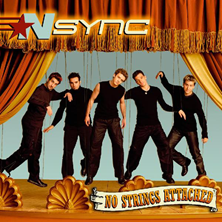A LOOK BACK...
Note: For the full investigative report, please visit the BWU Website and click on the "BWU Investigations" link
In order to understand which type of artist is more valuable, let's look back to the peak of album sales.
 In 2000, the music industry was at its greatest heights yet. According to the New York Times, 785.1 million albums were bought by consumers. The numbers may seem huge, but it shouldn't be when the list of albums released that year is observed. 2000 saw some of the biggest releases of the new millennium. The booming teen pop genre saw new albums from The Backstreet Boys, 'N Sync, and Britney Spears. Records from Eminem and Creed also caused quite a stir.
In 2000, the music industry was at its greatest heights yet. According to the New York Times, 785.1 million albums were bought by consumers. The numbers may seem huge, but it shouldn't be when the list of albums released that year is observed. 2000 saw some of the biggest releases of the new millennium. The booming teen pop genre saw new albums from The Backstreet Boys, 'N Sync, and Britney Spears. Records from Eminem and Creed also caused quite a stir.
The most successful genre from the late 90's/early 00's era was teen pop. Artists like Britney, Christina, 'N Sync, and the Backstreet Boys were the focal point of the industry, selling millions with ease.
There are some significant differences between Christina Aguilera and the other three, though. Britney, Backstreet, 'N Sync were all on Jive Records, while Christina was with RCA. Also, Christina's debut went 8x Platinum, while the other three scored at least 2 Diamond albums.
Wait. How is that possible? How could Christina only sell 8 million, while Britney's debut sold 14 million? Many will say that Christina was the better artist (she won the Best New Artist Grammy in 2000). Shouldn't the sales reflect that?
Not necessarily. A possible reason for Britney's success over Christina was the single/album argument.
Jive Records' initiative was to sell as many albums as possible. How did they do that? By stopping the physical release of their artists' singles.
 Many of Britney's singles charted in the 20s and 30s of the Hot 100. Why? Because Jive didn't release a physical copy of the single. The only way the singles were able to chart was through radio play, which was frequently high. Without a physical copy of their favorite single, fans were forced to buy the full album. Millions who would've rather just bought "Sometimes" or "Oops!... I Did It Again" separately bought the album. The latter is a good example of Jive's dependence on radio. "Oops!" peaked at #9 without a single release. The exposure through radio had fans desperately wanting the single, which would only be available when the album of the same name was released a month later. The suspense was lifted on May 16th, when Oops!...I Did It Again was released. Within a week, the album sold 1.3 million copies, the highest total for a female artist. Britney's other singles (save for "Stronger") were also held back physically, pushing the album sales to the 10 million mark.
Many of Britney's singles charted in the 20s and 30s of the Hot 100. Why? Because Jive didn't release a physical copy of the single. The only way the singles were able to chart was through radio play, which was frequently high. Without a physical copy of their favorite single, fans were forced to buy the full album. Millions who would've rather just bought "Sometimes" or "Oops!... I Did It Again" separately bought the album. The latter is a good example of Jive's dependence on radio. "Oops!" peaked at #9 without a single release. The exposure through radio had fans desperately wanting the single, which would only be available when the album of the same name was released a month later. The suspense was lifted on May 16th, when Oops!...I Did It Again was released. Within a week, the album sold 1.3 million copies, the highest total for a female artist. Britney's other singles (save for "Stronger") were also held back physically, pushing the album sales to the 10 million mark.
 Christina, on the other hand, had three #1 singles from her debut. However, she didn't sell as much as Britney. All of her singles were physically released, meaning that people didn't have to buy the album to get the song they wanted, like Britney. If her singles didn't have physical releases, she probably would've sold more. Likewise, if Britney's singles were released physically, many of them would've gone to #1 as well.
Christina, on the other hand, had three #1 singles from her debut. However, she didn't sell as much as Britney. All of her singles were physically released, meaning that people didn't have to buy the album to get the song they wanted, like Britney. If her singles didn't have physical releases, she probably would've sold more. Likewise, if Britney's singles were released physically, many of them would've gone to #1 as well.
The major reason for the pop era's success, at least in terms of Jive, was the importance put on the album instead of the single. Yes, millions were spent on music videos that would go to #1 on TRL, but the plan was for people to flock to the stores not for a CD single, but the album itself.
In the most profitable era of music, the albums artist was placed above the singles artist. But what about now? As the album sales drop and the singles sales rise, does it remain the same?
To Be Continued...
(For the full report, including in depth sales figures, please visit the BWU Investigations page on the BWU website)
1 comment:
This is fascinating but surely things have changed? I was under the impression that Jive is big on singles now.
Post a Comment